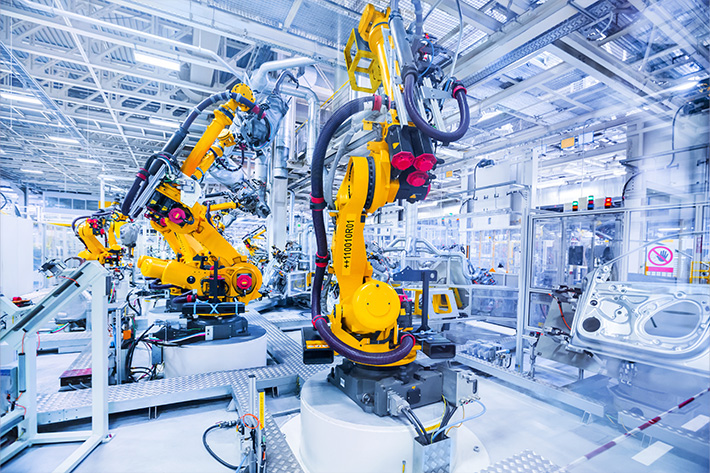For many companies, reporting on how their activities impact the environment is new. Those who have already begun to report on ESG using frameworks like the Global Reporting Initiative (GRI), International Sustainability Standards Board (ISSB), Climate Disclosure Project (CDP), and Science Based Target Initiative (SBTi) will find they have a head start, as CSRD aligns with many of these international frameworks.
“Establishing comprehensive reporting, embracing circular economy principles, and harnessing renewable resources may seem like a daunting task, but those who get an early start will benefit greatly. More than a feel-good objective, sustainability is a powerful driver for reduced costs, increased market share, and increased agility and resilience,” Dave Duncan states. Here is the reasoning that builds up his conclusion:

Aligning cost and footprint
“Sustainability is most long term viable when it aligns with financial goals. Efficiency improvements lie at the heart of sustainable practices as they entail streamlining processes and optimizing resource utilization. Companies that start pursuing more sustainable ways to produce products now will uncover opportunities for cost savings that set them up for success in years to come. Consider design, where 80% of a product’s footprint is determined. By applying generative design, manufacturers can reduce material usage by 10-15% enabling a substantive decrease in embodied carbon and a reduction in materials spending.
On the factory floor, energy management and bottleneck analysis tools allow companies to identify ways to reduce energy consumption, waste, scrap, and rework, all while maintaining output levels. CIMC, a leading supplier of logistics and energy equipment, leveraged energy management software to gain operational visibility and reduce energy consumption by 13%.
In the field, companies can drastically reduce spare parts inventory by applying multi-echelon service parts optimization to position stock in a network to meet service level agreements (SLAs). Metso, a mining equipment manufacturer and champion of sustainable practices, reduced its inventory by €40 million while improving service levels by 3%. Just imagine all the embodied carbon associated with €40 million worth of parts.
Gaining competitive advantage
Embracing sustainability often necessitates the adoption of new technologies, and digital transformation is a necessary steppingstone on the path toward near term and net zero targets. Those who digitize and innovate first will be positioned at the forefront of their industry, giving them a competitive advantage and reverence from eco-conscious customers.
The shift to SaaS (Software as a Service) is a trend that gives manufacturers a competitive edge and lower carbon footprint. A study from 451 Research found that moving from on premise to cloud hosting reduces footprints by 80% on average. Beyond these emissions reductions, cloud solutions allow manufacturers to spend less time maintaining software and more time working on their unique business advantage.

Digital technologies that power the product lifecycle, whether that’s CAD, PLM, ALM, IoT or FSM, are non-negotiable for companies looking to create more sustainable products. These solutions enable key practices like dematerialization, simulated prototyping, remote service, and over-the-air software updates that reduce a product’s carbon footprint while creating added value for the customer.
In the design stages, dematerialization through generative design reduces a product’s embodied carbon, creating a ripple effect downstream. For example, when a customer steps into a car with a light weighted engine design, they benefit from better fuel efficiency over the car’s lifetime. Once a design is ready, engineers can run 3D simulations in their CAD system to understand the performance of the design and iterate improvements. Running these simulation cycles upfront helps manufacturers reduce physical prototyping, which translates to lower costs, faster development, and a smaller footprint.
Empowering front line workers
As products make their way to customers, regular maintenance is required to keep most products in tip-top shape. Service providers who adopt a remote service strategy will be able to deliver faster, cheaper, and lower-footprint service. By empowering frontline workers with digital field service management tools to monitor, diagnose, troubleshoot, and resolve customer issues remotely, service providers can scale back truck rolls and travel-related emissions while ensuring uptime for customers.
When the newness of a particular product wares off, providing over-the-air software updates as opposed to hardware upgrades delivers instant results to customers while eliminating the footprint impact that comes with a recall of physical products. Just as importantly, these over-the-air updates allow manufacturers to maintain a strong communication link with their customers. As circularity becomes paramount, a manufacturer’s ability to maintain a close relationship with customers over a product’s lifecycle will make or break their success. Over-the-air updates have proven to be an effective way to establish this ongoing, beneficial relationship with customers that opens the door for circularity progression.

Increasing agility and recilliance
While CSRD legislation originates in the EU, it is important to understand that any company that intends to exceed €150 million annual revenue in the EU needs to be compliant. CSRD is effectively a global regulation with rolling deadlines depending on the size and location of companies. An important factor to remember here is that the supply chain represents the highest or second highest emission source for most manufacturers. This means that to ensure compliance with CSRD, manufacturers will prefer suppliers that commit to the same levels of footprint transparency and reduction as them.
The pressure is on. Those who proactively integrate sustainability measures now will be better prepared to comply with regulations and better poised to win contracts. Some of these sustainability measures may involve diversifying suppliers and sourcing materials locally, reducing dependency on a single source. This enhances resilience by mitigating the risks associated with supply chain disruptions or geopolitical issues. Lastly, electrifying anywhere fossil fuels are used and improving electric efficiency means better agility and flexibility and more predictable operational expenditure for the business.
The time is now
Companies who are pursuing sustainability commitments today are doing so voluntarily. With CSRD coming into effect, sustainability commitments will not only be required by law but will also be aggressive, making it critical that manufacturers get an early start on CSRD. This means it’s time to improve the digital maturity of your business, from product design to manufacturing to service, so that rapid reductions will be possible.
The manufacturers who commit to net-zero emissions, zero waste, and equitable practices will drive a new era of efficiency, profitability, and environmental stewardship. Those who stay tethered to outdated, resource-intensive practices risk becoming uncompetitive suppliers to their footprint-conscious customers—and could lose out on up to 20% in economic profit by 2030. Which path will you be on?”






